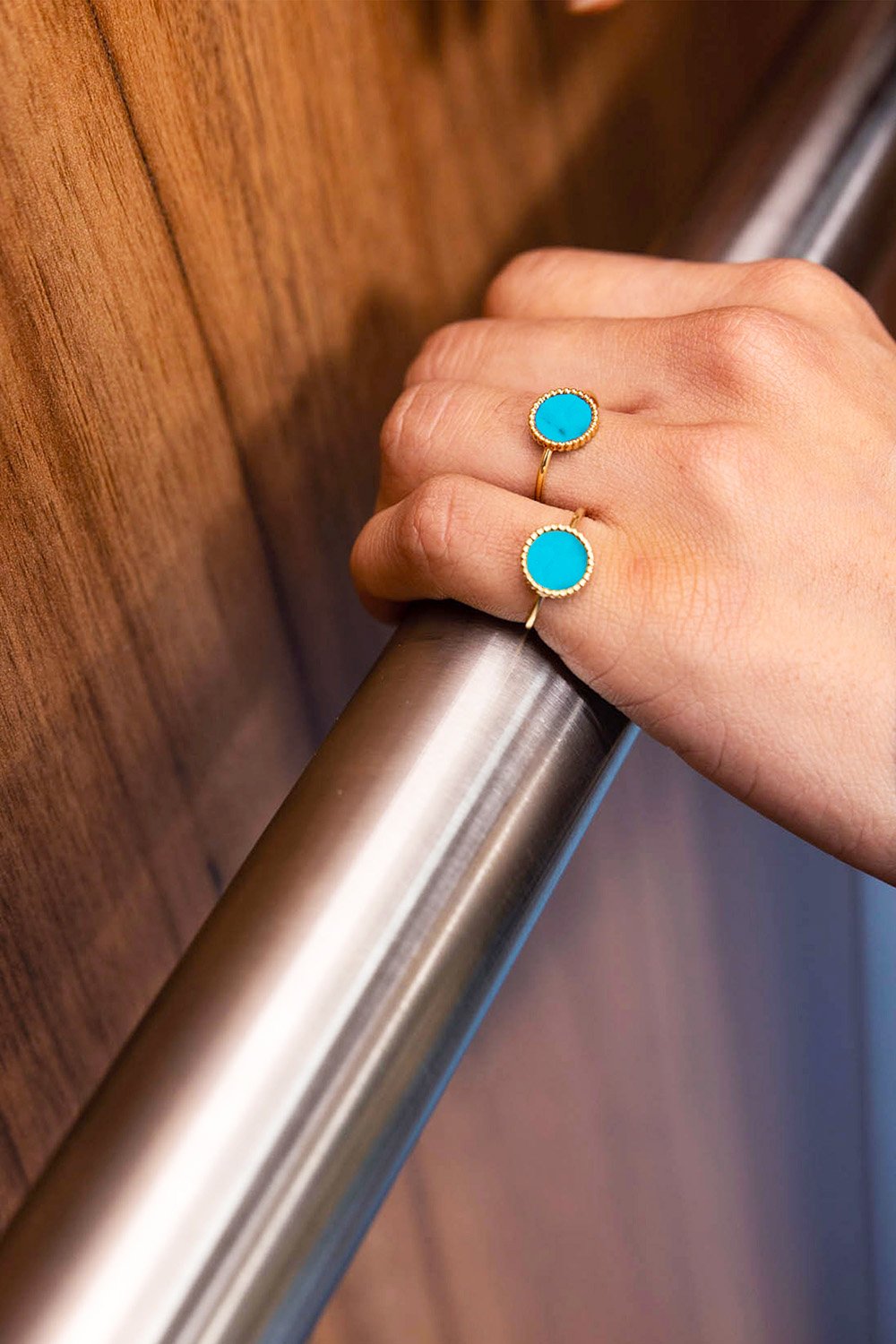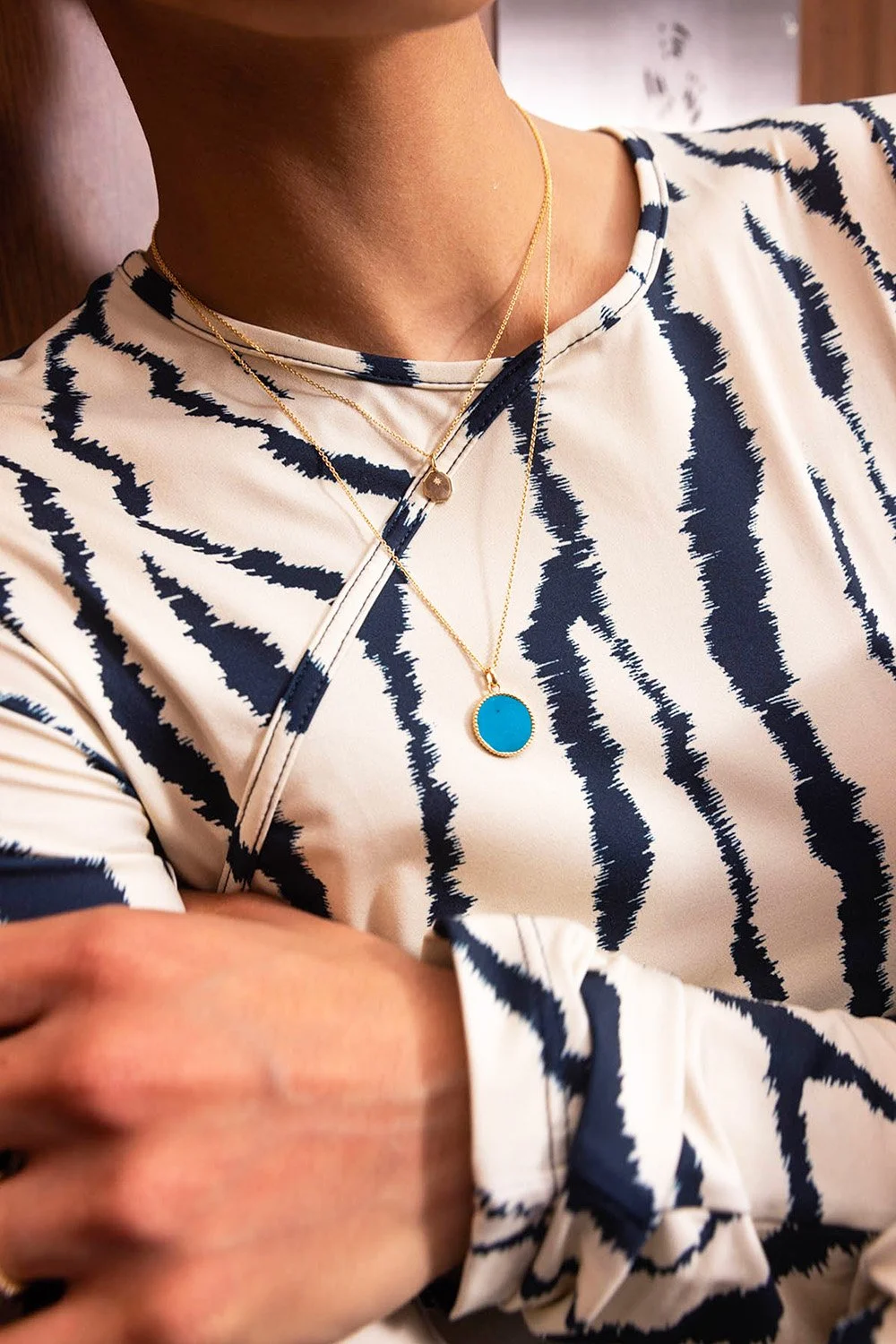turquoise
Turquoise etymologically means "stone from Turkey", in reference to the country that imported the blue stone to France. Turquoise's dazzling blue-green hues are reminiscent of clear skies, calm seas and exotic lagoons.
WHAT IS turquoise made of?
Turquoise is composed of copper and aluminum phosphate. It is a semi-opaque blue stone whose color can be close to green. It is mostly found in arid and desert environments.
This fine stone has a strength of 5 to 6 on the Mohs scale.
WHERE DOES TURQUOISE COME FROM?
Turquoise was used in Egypt as early as 6000 BC. The oldest turquoise discovered dates back to this period, and was found during archaeological excavations on a bracelet worn by Queen Zar, queen of the first Egyptian dynasty. Found in her tomb, the blue stone served to protect her. Tutankhamen's sarcophagus was also set with powerful stones such as turquoise, lapis lazuli, amethyst and carnelian.
Turquoise was also highly prized in Asia, notably in Tibet and India, for its medicinal and jewelry-making properties.
WHAT DOES Turquoise SYMBOLIZE?
Turquoise is said to be a purifying and soothing stone, calming anger. The blue stone regulates the nervous system.
This fine stone also brings optimism and joie de vivre, and is said to ward off negative energies.
Its medicinal virtues are numerous: blue stone is said to fight fatigue and help you get a good night's sleep, as well as strengthening the immune system.
WHICH METAL TO COMBINE Turquoise?
White and gray metals are perfect for pairing with turquoise, such aswhite gold or platinum. White blends perfectly with the blue stone, bringing the blue-green color to the fore. Yellow gold is also frequently used for turquoise jewelry. Yellow gold brings a sunny, luminous aspect to turquoise jewelry in summer.
HOW TO CARE FOR YOUR JEWELRY IN TURQUOISE?
To restore light and energy to your turquoise jewelry, you can gently rub your bracelet, medal or ring with a chamois or damp cloth.
It is not advisable to submerge your turquoise jewelry in water or any other liquid, as turquoise is an organic material. The color of the fine stone could be altered and the jewel could lose its light. Avoid contact with toxic and chemical products such as cleaning products and cosmetics.







